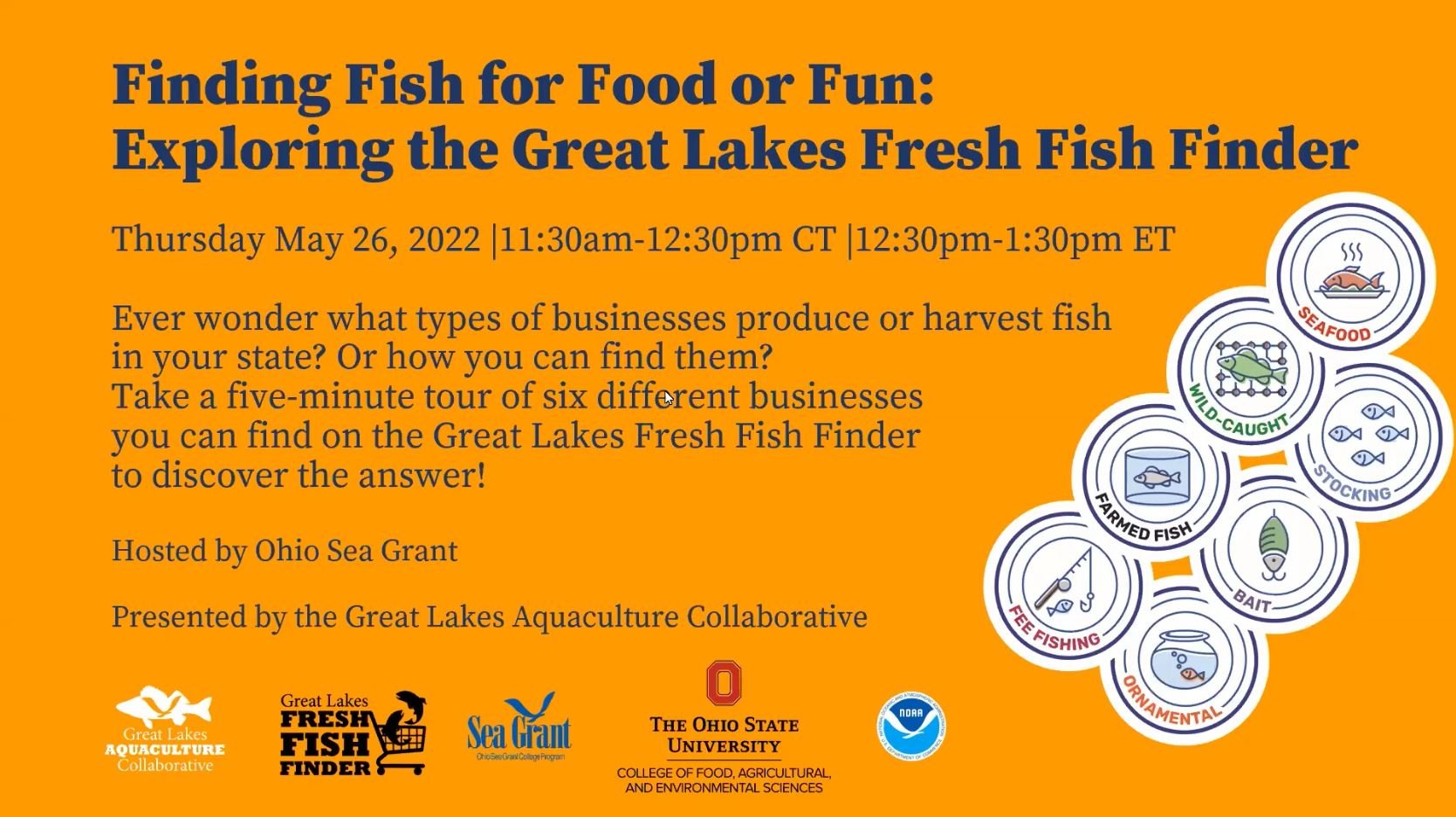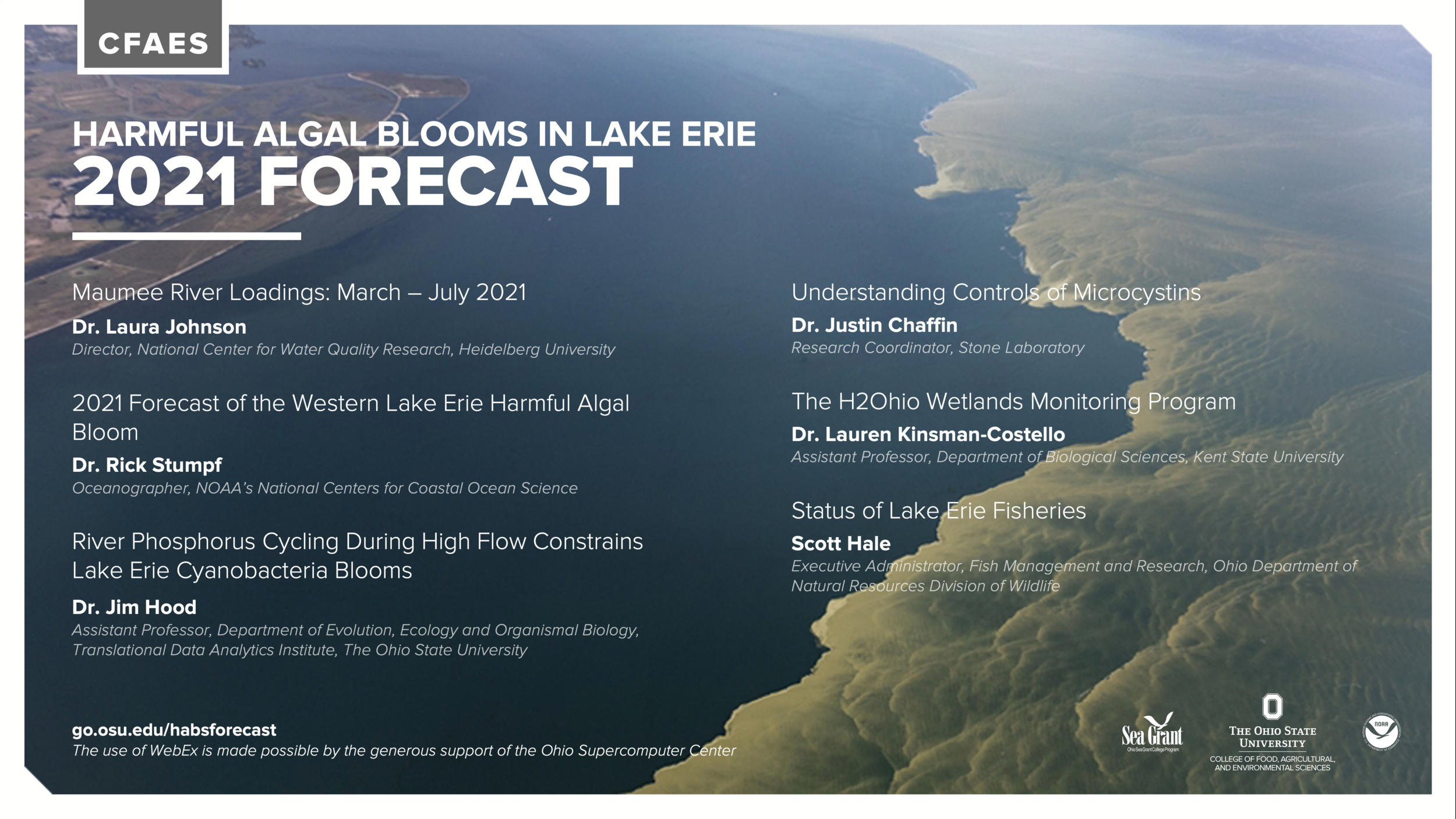
AppSciComm Storytelling Series: Beyond the News Release
PIOs are often tasked with finding ways to highlight their institution's expertise. This session is aimed at discussing ways to do this that don't rely on traditional news releases. We'll talk about both formats for highlighting expertise and how to generate story ideas. (Hint: it's helpful if you know some curious kids!)

Freshwater Science: The Value of Lake Erie Beaches
Beach visits play an important role in Ohio’s $15 billion tourism industry, but water quality issues like harmful algal blooms and E. coli outbreaks can negatively affect beachgoers and discourage them from returning to a favorite spot. The economic impact of these water quality issues is not well understood yet, but estimates of this reduced economic welfare from 2019 are as high as $5.8 million.
Dr. Brent Sohngen at The Ohio State University is working on determining the value of Lake Erie beaches to the state’s overall economy, and how that value is affected when water quality issues like harmful algal blooms occur.

Freshwater Science: Monitoring New Contaminants in Public Drinking Water Sources
Pharmaceuticals and personal care products (PPCPs), including antibiotics, are emerging contaminants in water that are not completely eliminated during water treatment. Because these compounds can affect human and wildlife health, it’s important to assess their presence in drinking and wastewater.
Dr. Jen Mou and Dr. Laura Leff at Kent State University are developing new methods to detect these compounds, to help guide approaches for dealing with contaminants like them in the future. The team also wants to determine if the presence of a bacterial gene that codes for antibiotic resistance can predict levels of antibiotic contamination in water samples.

Freshwater Science: Why Environmentally Conscious Shoppers Don’t Bring Reusable Bags
Single-use plastic bags are everywhere in society, but despite their convenience, they can have negative impacts on the environment and on waste management.
Farmers markets seem like a logical place to encourage the use of reusable bags, but when Jill Bartolotta and Dr. Scott Hardy at Ohio Sea Grant examined the effects of giving out free reusable bags at Ohio farmers markets, they found that just having bags available is not an effective approach to reducing the use of plastic bags. Instead, communities should consider focused approaches like bag bans and education and outreach strategies, as well as financial and policy incentives.

Freshwater Science: A Toxin Forecast for Lake Erie’s Harmful Algal Blooms
Scientists are currently able to accurately forecast the size and approximate location of Lake Erie’s summer harmful algal blooms, but they still have questions about what controls when blooms become toxic, and how to predict which algal toxins the bloom is likely to produce.
Dr. Justin Chaffin at Ohio State’s Stone Lab is studying the environmental factors that cause Lake Erie algal blooms to become toxic or remain non-toxic, to provide more guidance to water utilities on when they should plan to treat drinking water for algal toxins.

Freshwater Science: Lake Erie Algae in the Depth of Winter
Although harmful algal blooms happen in the summer, the algae themselves are year-round residents of the water bodies they inhabit – but very little is known about other times in the annual cycle of blooms. For Lake Erie, ice cover and extreme weather conditions in winter and spring prevent regular monitoring and safe sampling.
By partnering with the U.S. and Canadian Coast Guards, Dr. Mike McKay at the University of Windsor can take advantage of those ships’ ice-breaking capabilities to sample offshore waters in winter and early spring, before state and federal agencies start their monitoring efforts.

Freshwater Science: Using Bacteria to Remove Microcystin from Drinking Water
Many Ohio communities draw their drinking water from Lake Erie, so making sure that any harmful algal bloom toxins are removed before the water reaches consumers is essential to maintaining public health. While water treatment plants currently use activated carbon, ozonation, and other methods to treat for algal toxins, Dr. Jason Huntley at The University of Toledo, with previous funding from the Harmful Algal Bloom Research Initiative and current funding from NOAA-PCMHAB is developing new cost-effective, efficient, and safe methods to remove algal toxins from drinking water, using bacteria that naturally break down microcystin toxin into non-toxic component parts. The team was issued a patent on this technology in May 2021.

Freshwater Science: Can Walleye See the Bait on the Hook?
Walleye fishing in Ohio significantly contributes to the state’s $1.9 billion sportfishing industry, but the fish are experiencing significant changes to their environment due to harmful algal blooms. For these visual hunters, those changes affect finding food and mates, and anglers who fish for walleye may have to change their approach to selecting lures. Dr. Suzanne Gray at The Ohio State University is linking walleye vision, murky waters from harmful algal blooms and lure colors to determine the impacts algal blooms can have on visual hunters like walleye and on the success of Lake Erie’s sportfishing industry.

Finding Fish for Food or Fun: Exploring the Great Lakes Fresh Fish Finder
Ever wonder what types of businesses produce or harvest fish in the Great Lakes? Or how you can find them? Take a five-minute tour of six different businesses you can find on the Great Lakes Fresh Fish Finder to discover the answer! Great Lakes Aquaculture Collaborative staff will visit farms producing fish for food, pond stocking, bait, fee fishing, and ornamentals, along with a commercial fishery, and followed by a Q&A with the operators.

Freshwater Science: Fungal-Like Disease Detection in Aquaculture Operations
Aquaculture is a growing industry in Ohio and the Great Lakes region, providing farm-raised seafood ranging from crawfish to walleye. And just like land-based farms, fish farmers spend a lot of time making sure their animals are healthy. Dr. Vipa Phuntumart and her team at Bowling Green State University have developed a method to detect Saprolegnia, a fungal-like pathogen that can result in an estimated loss of $40 million to U.S. aquaculture operations every year, in water samples from fish farms. This way, the fish can be treated with eco-friendly options before they show symptoms.

Freshwater Science: Using Genetics to Manage Lake Erie Walleye Fisheries
Walleye is an important Lake Erie species, supporting both commercial and recreational fisheries. Management agencies need ways to identify how local spawning populations contribute to the lake-wide fish population, so they can continue to keep Lake Erie’s walleye fisheries naturally reproducing and sustainable. Dr. Stuart Ludsin at The Ohio State University, with funding from the Harmful Algal Bloom Research Initiative, has developed a genetic tool that can differentiate between walleye from the eastern versus western basins of Lake Erie and successfully helped agencies to better understand the contributions of different spawning locations to the eastern basin’s commercial and recreational fisheries.

Freshwater Science: Health Impacts of Algal Toxins in the Context of Chronic Illnesses
Algal toxins affect the liver, gastrointestinal system and kidneys, and may have a more severe effect in the context of pre-existing conditions. Dr. David Kennedy and Dr. Steven Haller at The University of Toledo, with funding from Ohio Sea Grant and the Harmful Algal Bloom Research Initiative, are examining these effects to help provide new guidelines for safe exposure levels to algal toxins for people with chronic illnesses. They also aim to develop new tests that can measure toxin exposure at very low levels, which can suppress common liver injury markers in some patients, and to create therapies to treat the organ damage caused by algal toxins.
Virtual Ohio Charter Captains Conference
The 2022 Ohio Charter Captains Conference will have a great list of speakers that will help you prepare for the upcoming season by providing updates about Lake Erie’s 2022 fishing outlook, fish behavior, and agency news and regulations. While this conference is designed for captains, anyone interested in Ohio’s Lake Erie charter fishing industry is welcome to join.

Freshwater Science: Stopping Algal Bloom Toxins at the Kitchen Tap
Harmful algal bloom toxins are a common concern for people living along the Lake Erie shoreline, where drinking water is often drawn from the lake.
In addition to removing these toxins during water treatment, Ohioans may have another tool at their disposal: Dr. Glenn Lipscomb’s research, funded by the Harmful Algal Bloom Research Initiative, has shown that reverse osmosis membranes, an essential component of home water purification systems, can remove algal toxins from drinking water.

Freshwater Science: Removing Algal Toxins from Drinking Water with Activated Carbon
During harmful algal bloom season, algal toxins can be common in drinking water drawn from Lake Erie. Water treatment plants are well set up to manage this issue for their customers, and often use powdered activated carbon to remove toxins, but they lack data on proper dosage depending on toxin types, toxin concentration and water properties.

Fishy Finances: Tips for Funding Your Fish Farm
Join the Great Lakes Aquaculture Collaborative and Ohio Sea Grant for a free webinar to learn about grant and loan financing options for aspiring and experienced fish farmers.

Fish Health on the Farm: What Can I Do and Resources When It’s Beyond Me
Join the Great Lakes Aquaculture Collaborative and Ohio Sea Grant for a webinar about identifying fish health problems, what you can do on the farm to prevent and treat problems, and when to ask for help from a vet or diagnostics lab!

Forecast for Harmful Algal Blooms in Lake Erie 2021
Ohio Sea Grant & Stone Lab will host NOAA's 2021 seasonal forecast for HABs in Lake Erie.

Fish to Fork: Grilling in the Great Lakes
Join the Great Lakes Aquaculture Collaborative and Ohio Sea Grant for a webinar about seafood safety, grilling tips, and demonstrations of seafood prep and grilling at home using seafood grown in Great Lakes aquaculture!

Fish to Fork: Cooking Great Lakes Fish
Join the Great Lakes Aquaculture Collaborative and Ohio Sea Grant for a webinar about resources for Great Lakes fish and a demonstration of how to dress, prepare, and cook fish at home!